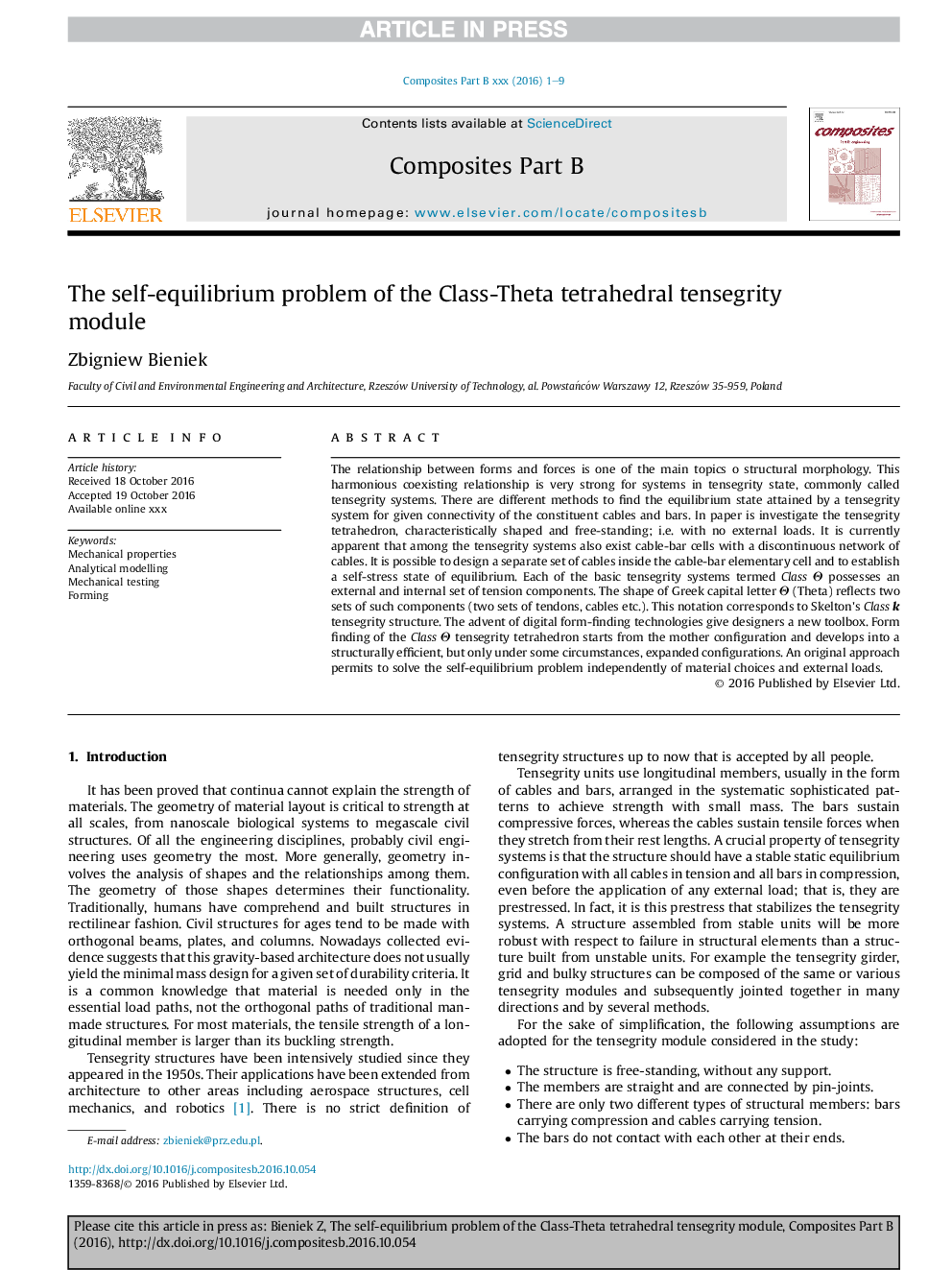| Article ID | Journal | Published Year | Pages | File Type |
|---|---|---|---|---|
| 5021625 | Composites Part B: Engineering | 2017 | 9 Pages |
Abstract
The relationship between forms and forces is one of the main topics o structural morphology. This harmonious coexisting relationship is very strong for systems in tensegrity state, commonly called tensegrity systems. There are different methods to find the equilibrium state attained by a tensegrity system for given connectivity of the constituent cables and bars. In paper is investigate the tensegrity tetrahedron, characteristically shaped and free-standing; i.e. with no external loads. It is currently apparent that among the tensegrity systems also exist cable-bar cells with a discontinuous network of cables. It is possible to design a separate set of cables inside the cable-bar elementary cell and to establish a self-stress state of equilibrium. Each of the basic tensegrity systems termed ClassÎ possesses an external and internal set of tension components. The shape of Greek capital letter Î (Theta) reflects two sets of such components (two sets of tendons, cables etc.). This notation corresponds to Skelton's Classk tensegrity structure. The advent of digital form-finding technologies give designers a new toolbox. Form finding of the ClassÎ tensegrity tetrahedron starts from the mother configuration and develops into a structurally efficient, but only under some circumstances, expanded configurations. An original approach permits to solve the self-equilibrium problem independently of material choices and external loads.
Related Topics
Physical Sciences and Engineering
Engineering
Engineering (General)
Authors
Zbigniew Bieniek,
